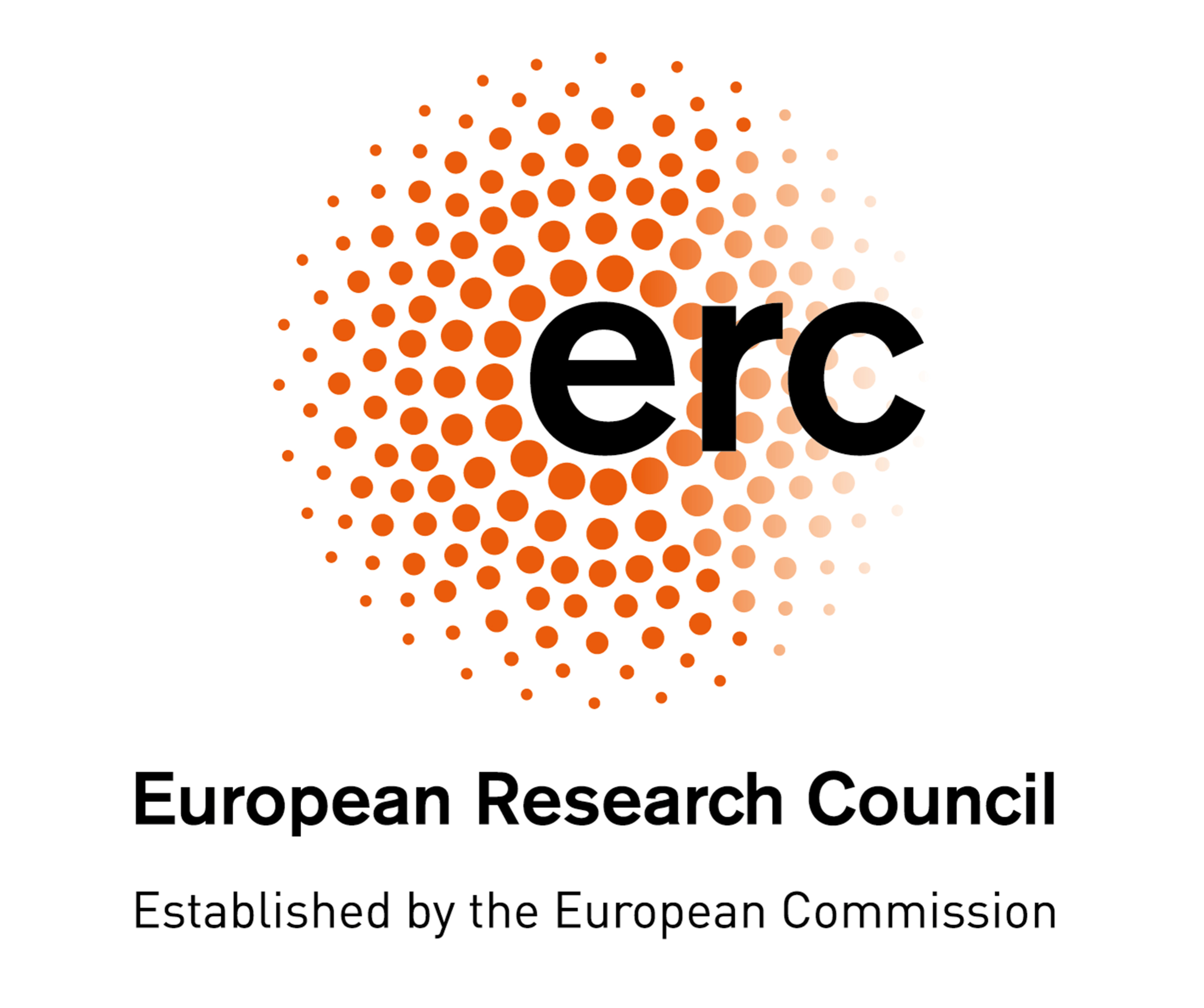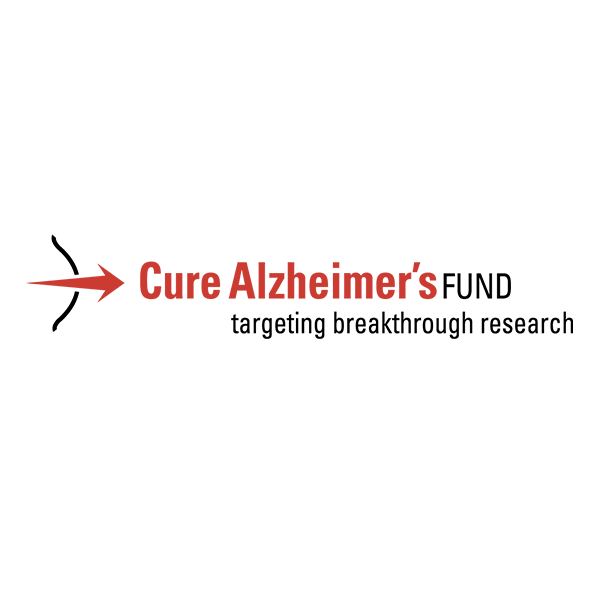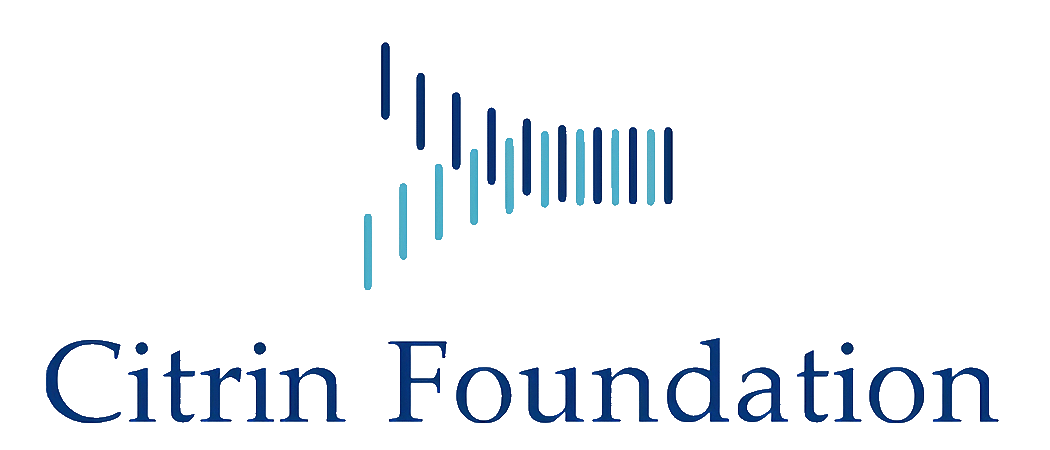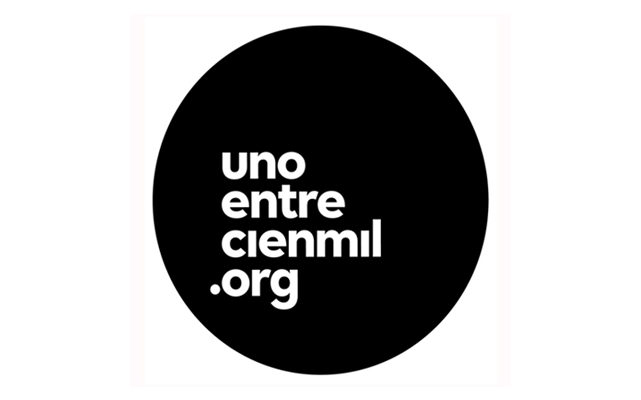Publicaciones representativas
1. The ALT pathway generates telomere fusions that can be detected in the blood of cancer patients
Francesc Muyas, Manuel José Gómez Rodriguez, Rita Cascão, Angela Afonso, Carolin M. Sauer, Claudia C. Faria, Isidro Cortés-Ciriano & Ignacio Flores
Telomere fusions (TFs) can trigger the accumulation of oncogenic alterations leading to malignant transformation and drug resistance. Despite their relevance in tumour evolution, our understanding of the patterns and consequences of TFs in human cancers remains limited. Here, we characterize the rates and spectrum of somatic TFs across >30 cancer types using whole-genome sequencing data. TFs are pervasive in human tumours with rates varying markedly across and within cancer types. In addition to end-to-end fusions, we find patterns of TFs that we mechanistically link to the activity of the alternative lengthening of telomeres (ALT) pathway. We show that TFs can be detected in the blood of cancer patients, which enables cancer detection with high specificity and sensitivity even for early-stage tumours and cancers of high unmet clinical need. Overall, we report a genomic footprint that enables characterization of the telomere maintenance mechanism of tumours and liquid biopsy analysis.
Published: https://doi.org/10.1038/s41467-023-44287-8
2. Transcriptional repression across mitosis: mechanisms and functions
A. Contreras; C. Perea-Resa
Transcription represents a central aspect of gene expression with RNA polymerase machineries (RNA Pol) driving the synthesis of RNA from DNA template molecules. In eukaryotes, a total of three RNA Pol enzymes generate the plethora of RNA species and RNA Pol II is the one transcribing all protein-coding genes. A high number of cis- and trans-acting factors orchestrates RNA Pol II-mediated transcription by influencing the chromatin recruitment, activation, elongation, and/or termination steps. The levels of DNA accessibility, defining open-euchromatin versus close-heterochromatin, delimits RNA Pol II activity as well as the encounter with other factors acting on chromatin such as the DNA replication or DNA repair machineries. The stage of the cell cycle highly influences RNA Pol II activity with mitosis representing the major challenge. In fact, there is a massive inhibition of transcription during the mitotic entry coupled with chromatin dissociation of most of the components of the transcriptional machinery. Mitosis, as a consequence, highly compromises the transcriptional memory and the perpetuation of cellular identity. Once mitosis ends, transcription levels immediately recover to define the cell fate and to safeguard the proper progression of daughter cells through the cell cycle. In this review, we evaluate our current understanding of the transcriptional repression associated with mitosis with a special focus on the molecular mechanisms involved, on the potential function behind the general repression, and on the transmission of the transcriptional machinery into the daughter cells. We finally discuss the contribution that errors in the inheritance of the transcriptional machinery across mitosis might play in stem cell aging.
Published; February 19 2024 https://doi.org/10.1042/BST20231071
3. Translational Control of Alphavirus–Host Interactions: Implications in Viral Evolution, Tropism and Antiviral Response
Iván Ventoso, Juan José Berlanga, René Toribio and Irene Díaz-López
Alphaviruses can replicate in arthropods and in many vertebrate species including humankind, but only in vertebrate cells do infections with these viruses result in a strong inhibition of host translation and transcription. Translation shutoff by alphaviruses is a multifactorial process that involves both host- and virus-induced mechanisms, and some of them are not completely understood. Alphavirus genomes contain cis-acting elements (RNA structures and dinucleotide composition) and encode protein activities that promote the translational and transcriptional resistance to type I IFN-induced antiviral effectors. Among them, IFIT1, ZAP and PKR have played a relevant role in alphavirus evolution, since they have promoted the emergence of multiple viral evasion mechanisms at the translational level. In this review, we will discuss how the adaptations of alphaviruses to vertebrate hosts likely involved the acquisition of new features in viral mRNAs and proteins to overcome the effect of type I IFN.
Keywords:
alphaviruses; translation initiation; eIF2α phosphorylation; RNA structure; antiviral response; interferon; evolution; host range
Published: 30 January 2024 https://doi.org/10.3390/v16020205
4. The JAK3Q988P mutation reveals oncogenic potential and resistance to ruxolitinib
Antonio Lahera, Laura Vela-Martín, Pablo Fernández-Navarro, Pilar Llamas, José L. López-Lorenzo, Javier Cornago, Javier Santos, José Fernández-Piqueras, María Villa-Morales
T-cell acute lymphoblastic leukemia (T-ALL) arises from the malignant transformation of T-cell progenitors at various differentiation stages. Given that patients who relapse have a dismal prognosis, there is an urgent need to identify the molecular alterations that are present in such patients and promote leukemogenesis to implement personalized therapies with higher efficacy and fewer adverse effects. In the present manuscript, we identified the JAK3Q988P mutation in a T-ALL patient who did not achieve a durable response after the conventional treatment and whose tumor cells at relapse presented constitutive activation of the JAK/STAT pathway. Although JAK3Q988P has been previously identified in T-ALL patients from different studies, the functional consequences exerted by this mutation remain unexplored. Through the combination of different hematopoietic cellular models, we functionally characterize JAK3Q988P as an oncogenic mutation that contributes to leukemogenesis. Notably, JAK3Q988P not only promotes constitutive activation of the JAK/STAT pathway in the absence of cytokines and growth factors, as is the case for other JAK3 mutations that have been functionally characterized as oncogenic, but also functions independently of JAK1 and IL2RG, resulting in high oncogenic potential as well as resistance to ruxolitinib. Our results indicate that ruxolitinib may not be efficient for future patients bearing the JAK3Q988P mutation who instead may obtain greater benefits from treatments involving other pharmacological inhibitors such as tofacitinib.
5. Versican accumulation drives Nos2 induction and aortic disease in Marfan syndrome via Akt activation
María Jesús Ruiz-Rodríguez, Jorge Oller, Sara Martínez-Martínez, Iván Alarcón-Ruiz , Marta Toral, Yilin Sun, Ángel Colmenar, María José Méndez-Olivares, Dolores López-Maderuelo, Christine B Kern, J Francisco Nistal, Arturo Evangelista, Gisela Teixido-Tura, Miguel R Campanero, and Juan Miguel Redondo
Thoracic aortic aneurysm and dissection (TAAD) is a life-threatening condition associated with Marfan syndrome (MFS), a disease caused by fibrillin-1 gene mutations. While various conditions causing TAAD exhibit aortic accumulation of the proteoglycans versican (Vcan) and aggrecan (Acan), it is unclear whether these ECM proteins are involved in aortic disease. Here, we find that Vcan, but not Acan, accumulated in Fbn1C1041G/+ aortas, a mouse model of MFS. Vcan haploinsufficiency protected MFS mice against aortic dilation, and its silencing reverted aortic disease by reducing Nos2 protein expression. Our results suggest that Acan is not an essential contributor to MFS aortopathy. We further demonstrate that Vcan triggers Akt activation and that pharmacological Akt pathway inhibition rapidly regresses aortic dilation and Nos2 expression in MFS mice. Analysis of aortic tissue from MFS human patients revealed accumulation of VCAN and elevated pAKT-S473 staining. Together, these findings reveal that Vcan plays a causative role in MFS aortic disease in vivo by inducing Nos2 via Akt activation and identify Akt signaling pathway components as candidate therapeutic targets.
Published on line: 2 January 2024 https://doi.org/10.1038/s44321-023-00009-7
6. Taurine as a possible therapy for immunosenescence and inflammaging
José M. Izquierdo
In their recent Science article, Singh et al. identified taurine as an endogenously produced anti-inflammatory, anti-immunosenescence, and anti-aging molecule. The authors also show that restoring taurine to its “youthful” levels prevents inflammation, boosts the immune response, and delays inflammaging/aging.
Published on line: https://www.doi.org/10.1038/s41423-023-01062-5
7. A function of spalt major as a sequence-specific DNA binding transcription factor mediates repression of knirps in the Drosophila wing imaginal disc
Cristina M. Ostalé, Alicia del Prado, Mercedes Martín, Nuria Esteban, Ana López-Varea, Jose F. de Celis
The Spalt transcriptional regulators participate in a variety of cell fate decisions during multicellular development. Vertebrate Spalt proteins have been mostly associated to the organization of heterochromatic regions, but they also contribute regulatory functions through binding to A/T rich motives present in their target genes. The developmental processes in which the Drosophila spalt genes participate are well known through genetic analysis, but the mechanism by which the Spalt proteins regulate transcription are still unknown. Furthermore, despite the prominent changes in gene expression associated to mutations in the spalt genes, the specific DNA sequences they bind are unknow. Here, we analyze a DNA fragment present in the regulatory region of the knirps gene. Spalt proteins are candidate repressors of knirps expression during the formation of the venation pattern in the wing disc, and we identified a minimal conserved 30bp sequence that binds to Spalt major both in vivo and in vitro. This sequence mediates transcriptional repression in the central region of the wing blade, constituting the first confirmed case of a direct regulatory interaction between Spalt major and its target DNA in Drosophila. Interestingly, we also find similar sequences in a set of eight novel candidate Spalt target genes, pointing to a common mechanism of transcriptional repression mediated by Spalt proteins.
Volume 510, June 2024, Pages 40-49 https://doi.org/10.1016/j.ydbio.2024.03.004
8. Defective mitochondria remodelling in B cells leads to an aged immune response
Marta Iborra-Pernichi, Jonathan Ruiz García, María Velasco de la Esperanza, Belén S. Estrada, Elena R. Bovolenta, Claudia Cifuentes, Cristina Prieto Carro, Tamara González Martínez, José García-Consuegra, María Fernanda Rey-Stolle, Francisco Javier Rupérez, Milagros Guerra Rodriguez, Rafael J. Argüello, Sara Cogliati, Fernando Martín-Belmonte & Nuria Martínez-Martín
The B cell response in the germinal centre (GC) reaction requires a unique bioenergetic supply. Although mitochondria are remodelled upon antigen-mediated B cell receptor stimulation, mitochondrial function in B cells is still poorly understood. To gain a better understanding of the role of mitochondria in B cell function, here we generate mice with B cell-specific deficiency in Tfam, a transcription factor necessary for mitochondrial biogenesis. Tfam conditional knock-out (KO) mice display a blockage of the GC reaction and a bias of B cell differentiation towards memory B cells and aged-related B cells, hallmarks of an aged immune response. Unexpectedly, blocked GC reaction in Tfam KO mice is not caused by defects in the bioenergetic supply but is associated with a defect in the remodelling of the lysosomal compartment in B cells. Our results may thus describe a mitochondrial function for lysosome regulation and the downstream antigen presentation in B cells during the GC reaction, the dysruption of which is manifested as an aged immune response.
Published: https://doi.org/10.1038/s41467-024-46763-1
9. Azithromycin preserves adult hippocampal neurogenesis and behavior in a mouse model of sepsis
Carla B. Rodríguez-Moreno, Héctor Cañeque-Rufo, Miguel Flor-García, Julia Terreros-Roncal, Elena P. Moreno-Jiménez, Noemí Pallas-Bazarra, Carlo Bressa, Mar Larrosa, Fabio Cafini, María Llorens-Martín
The mammalian hippocampus can generate new neurons throughout life. Known as adult hippocampal neurogenesis (AHN), this process participates in learning, memory, mood regulation, and forgetting. The continuous incorporation of new neurons enhances the plasticity of the hippocampus and contributes to the cognitive reserve in aged individuals. However, the integrity of AHN is targeted by numerous pathological conditions, including neurodegenerative diseases and sustained inflammation. In this regard, the latter causes cognitive decline, mood alterations, and multiple AHN impairments. In fact, the systemic administration of Lipopolysaccharide (LPS) from E. coli to mice (a model of sepsis) triggers depression-like behavior, impairs pattern separation, and decreases the survival, maturation, and synaptic integration of adult-born hippocampal dentate granule cells. Here we tested the capacity of the macrolide antibiotic azithromycin to neutralize the deleterious consequences of LPS administration in female C57BL6J mice. This antibiotic exerted potent neuroprotective effects. It reversed the increased immobility time during the Porsolt test, hippocampal secretion of pro-inflammatory cytokines, and AHN impairments. Moreover, azithromycin promoted the synaptic integration of adult-born neurons and functionally remodeled the gut microbiome. Therefore, our data point to azithromycin as a clinically relevant drug with the putative capacity to ameliorate the negative consequences of chronic inflammation by modulating AHN and hippocampal-related behaviors.
Volume 117, March 2024, Pages 135-148 https://doi.org/10.1016/j.bbi.2024.01.005
10. An ETFDH-driven metabolon supports OXPHOS efficiency in skeletal muscle by regulating coenzyme Q homeostasis
Juan Cruz Herrero Martín, Beñat Salegi Ansa, Gerardo Álvarez-Rivera, Sonia Domínguez-Zorita, Pilar Rodríguez-Pombo, Belén Pérez, Enrique Calvo, Alberto Paradela, David G. Miguez, Alejandro Cifuentes, José M. Cuezva & Laura Formentini
Coenzyme Q (Q) is a key lipid electron transporter, but several aspects of its biosynthesis and redox homeostasis remain undefined. Various flavoproteins reduce ubiquinone (oxidized form of Q) to ubiquinol (QH2); however, in eukaryotes, only oxidative phosphorylation (OXPHOS) complex III (CIII) oxidizes QH2 to Q. The mechanism of action of CIII is still debated. Herein, we show that the Q reductase electron-transfer flavoprotein dehydrogenase (ETFDH) is essential for CIII activity in skeletal muscle. We identify a complex (comprising ETFDH, CIII and the Q-biosynthesis regulator COQ2) that directs electrons from lipid substrates to the respiratory chain, thereby reducing electron leaks and reactive oxygen species production. This metabolon maintains total Q levels, minimizes QH2-reductive stress and improves OXPHOS efficiency. Muscle-specific Etfdh−/− mice develop myopathy due to CIII dysfunction, indicating that ETFDH is a required OXPHOS component and a potential therapeutic target for mitochondrial redox medicine.
Published: https://doi.org/10.1038/s42255-023-00956-y
11. Intron retention as a productive mechanism in human MAPT: RNA species generated by retention of intron 3
Daniel Ruiz-Gabarre, Laura Vallés-Saiz, Almudena Carnero-Espejo, Isidro Ferrer, Félix Hernández, Ramon Garcia-Escudero, Jesús Ávila and Vega García-Escudero
Tau is a microtubule-binding protein encoded by the MAPT gene. Tau is essential for several physiological functions and associated with pathological processes, including Alzheimer’s disease (AD). Six tau isoforms are typically described in the central nervous system, but current research paints a more diverse landscape and a more nuanced balance between isoforms. Recent work has described tau isoforms generated by intron 11 and intron 12 retention. This work adds to that evidence, proving the existence of MAPT transcripts retaining intron 3. Our aim is to demonstrate the existence of mature MAPT RNA species that retain intron 3 in human brain samples and to study its correlation with Alzheimer’s disease across different regions.
Volume 100, February 2024, 104953 https://doi.org/10.1016/j.ebiom.2023.104953
12. Metabolic Rewiring and Altered Glial Differentiation in an iPSC-Derived Astrocyte Model Derived from a Nonketotic Hyperglycinemia Patient
Laura Arribas-Carreira, Margarita Castro, Fernando García, Rosa Navarrete, Irene Bravo-Alonso, Francisco Zafra, Magdalena Ugarte, Eva Richard, Belén Pérez, Pilar Rodríguez-Pombo
The pathophysiology of nonketotic hyperglycinemia (NKH), a rare neuro-metabolic disorder associated with severe brain malformations and life-threatening neurological manifestations, remains incompletely understood. Therefore, a valid human neural model is essential. We aimed to investigate the impact of GLDC gene variants, which cause NKH, on cellular fitness during the differentiation process of human induced pluripotent stem cells (iPSCs) into iPSC-derived astrocytes and to identify sustainable mechanisms capable of overcoming GLDC deficiency. We developed the GLDC27-FiPS4F-1 line and performed metabolomic, mRNA abundance, and protein analyses. This study showed that although GLDC27-FiPS4F-1 maintained the parental genetic profile, it underwent a metabolic switch to an altered serine–glycine–one-carbon metabolism with a coordinated cell growth and cell cycle proliferation response. We then differentiated the iPSCs into neural progenitor cells (NPCs) and astrocyte-lineage cells. Our analysis showed that GLDC-deficient NPCs had shifted towards a more heterogeneous astrocyte lineage with increased expression of the radial glial markers GFAP and GLAST and the neuronal markers MAP2 and NeuN. In addition, we detected changes in other genes related to serine and glycine metabolism and transport, all consistent with the need to maintain glycine at physiological levels. These findings improve our understanding of the pathology of nonketotic hyperglycinemia and offer new perspectives for therapeutic options.
Published: 28 February 2024 https://doi.org/10.3390/ijms25052814
13. Insights into the Molecular Mechanisms of Genetic Predisposition to Hematopoietic Malignancies: The Importance of Gene–Environment Interactions
Cobaleda, Cesar, Godley, Lucy A., Nichols, Kim E., Wlodarski, Marcin W., Sanchez-Garcia, Isidro
The recognition of host genetic factors underlying susceptibility to hematopoietic malignancies has increased greatly over the last decade. Historically, germline predisposition was thought to primarily affect the young. However, emerging data indicate that hematopoietic malignancies that develop in people of all ages across the human lifespan can derive from germline predisposing conditions and are not exclusively observed in younger individuals. The age at which hematopoietic malignancies manifest appears to correlate with distinct underlying biological pathways. Progression from having a deleterious germline variant to being diagnosed with overt malignancy involves complex, multistep gene–environment interactions with key external triggers, such as infection and inflammatory stimuli, driving clonal progression. Understanding the mechanisms by which predisposed clones transform under specific pressures may reveal strategies to better treat and even prevent hematopoietic malignancies from occurring.
Recent unbiased genome-wide sequencing studies of children and adults with hematopoietic malignancies have revealed novel genes in which disease-causing variants are of germline origin. This paradigm shift is spearheaded by findings in myelodysplastic syndrome/acute myeloid leukemia (MDS/AML) as well as acute lymphoblastic leukemia, but it also encompasses other cancer types. Although not without challenges, the field of genetic cancer predisposition is advancing quickly, and a better understanding of the genetic basis of hematopoietic malignancies risk affects therapeutic decisions as well as genetic counseling and testing of at-risk family members.
March 01 2024 https://doi.org/10.1158/2159-8290.CD-23-1091
14. Incipient functional SARS-CoV-2 diversification identified through neural network haplotype maps
Since its introduction in the human population, SARS-CoV-2 has evolved into multiple clades, but the events in its intrahost diversification are not well understood. Here, we compare three-dimensional (3D) self-organized neural haplotype maps (SOMs) of SARS-CoV-2 from thirty individual nasopharyngeal diagnostic samples obtained within a 19-day interval in Madrid (Spain), at the time of transition between clades 19 and 20. SOMs have been trained with the haplotype repertoire present in the mutant spectra of the nsp12- and spike (S)-coding regions. Each SOM consisted of a dominant neuron (displaying the maximum frequency), surrounded by a low-frequency neuron cloud. The sequence of the master (dominant) neuron was either identical to that of the reference Wuhan-Hu-1 genome or differed from it at one nucleotide position. Six different deviant haplotype sequences were identified among the master neurons. Some of the substitutions in the neural clouds affected critical sites of the nsp12-nsp8-nsp7 polymerase complex and resulted in altered kinetics of RNA synthesis in an in vitro primer extension assay. Thus, the analysis has identified mutations that are relevant to modification of viral RNA synthesis, present in the mutant clouds of SARS-CoV-2 quasispecies. These mutations most likely occurred during intrahost diversification in several COVID-19 patients, during an initial stage of the pandemic, and within a brief time period.
February 28, 2024 https://doi.org/10.1073/pnas.2317851121
15. The antiviral response triggered by the cGAS/STING pathway is subverted by the foot-and-mouth disease virus proteases
Miguel Ángel Sanz, Miryam Polo, Miguel Rodríguez‑Pulido, Ranjitha Huildore Bommanna, Margarita Sáiz
Propagation of viruses requires interaction with host factors in infected cells and repression of innate immune responses triggered by the host viral sensors. Cytosolic DNA sensing pathway of cyclic GMP-AMP synthase (cGAS) and stimulator of interferon genes (STING) is a major component of the antiviral response to DNA viruses, also known to play a relevant role in response to infection by RNA viruses, including foot-and-mouth disease virus (FMDV). Here, we provide supporting evidence of cGAS degradation in swine cells during FMDV infection and show that the two virally encoded proteases, Leader (Lpro) and 3Cpro, target cGAS for cleavage to dampen the cGAS/STING-dependent antiviral response. The specific target sequence sites on swine cGAS were identified as Q140/T141 for the FMDV 3Cpro and the KVKNNLKRQ motif at residues 322–330 for Lpro. Treatment of swine cells with inhibitors of the cGAS/STING pathway or depletion of cGAS promoted viral infection, while overexpression of a mutant cGAS defective for cGAMP synthesis, unlike wild type cGAS, failed to reduce FMDV replication. Our findings reveal a new mechanism of RNA viral antagonism of the cGAS-STING innate immune sensing pathway, based on the redundant degradation of cGAS through the concomitant proteolytic activities of two proteases encoded by an RNA virus, further proving the key role of cGAS in restricting FMDV infection.
Published: https://doi.org/10.1007/s00018-024-05190-7
16. Discovery of circulating miRNAs as biomarkers of chronic Chagas heart disease via a small RNA‑Seq approach
Silvina R. Villar, Alfonso Herreros-Cabello, Francisco Callejas-Hernández, María C. Maza, Javier del Moral-Salmoral, Mario Gómez-Montes, Héctor O. Rodríguez-Angulo, Irene Carrillo, Miguel Górgolas, Pau Bosch-Nicolau, Israel Molina, José A. Pérez-Molina, Begoña Monge-Maillo, Oscar A. Bottasso, Juan Beloscar, Ana R. Pérez, Manuel Fresno & Núria Gironès
Chagas disease affects approximately 7 million people worldwide in Latin America and is a neglected tropical disease. Twenty to thirty percent of chronically infected patients develop chronic Chagas cardiomyopathy decades after acute infection. Identifying biomarkers of Chagas disease progression is necessary to develop better therapeutic and preventive strategies. Circulating microRNAs are increasingly reliable biomarkers of disease and therapeutic targets. To identify new circulating microRNAs for Chagas disease, we performed exploratory small RNA sequencing from the plasma of patients and performed de novo miRNA prediction, identifying potential new microRNAs. The levels of the new microRNAs temporarily named miR-Contig-1519 and miR-Contig-3244 and microRNAs that are biomarkers for nonchagasic cardiomyopathies, such as miR-148a-3p and miR-224-5p, were validated by quantitative reverse transcription. We found a specific circulating microRNA signature defined by low miR-Contig-3244, miR-Contig-1519, and miR-148a-3 levels but high miR-224-5p levels for patients with chronic Chagas disease. Finally, we predicted in silico that these altered circulating microRNAs could affect the expression of target genes involved in different cellular pathways and biological processes, which we will explore in the future.
Published: https://doi.org/10.1038/s41598-024-51487-9




















